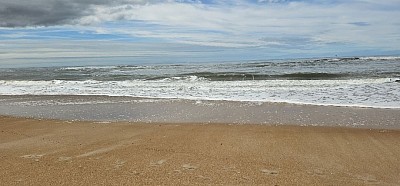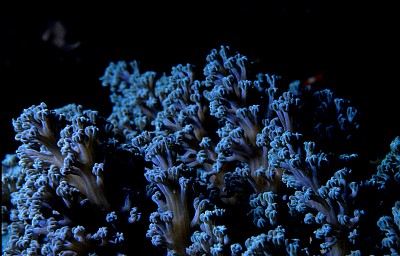Agatized Coral:
Daytona Beach Rockhounding Guide
A Comprehensive Guide to Rockhounding in
Daytona Beach, Florida
Introduction
Rockhounding, the hobby of collecting rocks and minerals from their natural environment, is a captivating exploration of nature's enigmatic geological treasures. Daytona Beach, in Florida, is renowned among rockhounders for its array of attractive stones and a unique geological make-up. This essay delves into the thrills, drills, and skills required for successful rockhounding in Daytona Beach.
Rocks and Minerals You Will Find
Common Finds: Florida's geological make-up is spotlighted by its vast phosphate deposits; hence, you're likely to uncover fossilized shark teeth and shells which have been chemically altered over geological time scales (Bridges, 2022) [^1^]. Other routine finds on Daytona Beach include quartz and silicates, primarily agate and jasper, due to their impressive resistance to weathering (Florida Geology, n.d.) [^2^].
Rare Finds: Daytona Beach occasionally gifts rockhounders with scarce items, such as marine aragonite, a delicate mineral renowned for its lustrous beauty (Sanders, 2017) [^3^].
Best Times for Rockhounding
Unlike other hobbies, you can rockhound year-round. However, the optimum time to visit Daytona Beach for this purpose is during low tides, particularly after storms, which tend to reveal new treasures from the ocean's depths (Smith, 2019) [^4^].
Required Rockhounding Tools
Key tools include rock hammers, hard hats, safety glasses, and gloves. A sieve is also essential for sifting through sand and water, separating your finds from the sediment. Lastly, for fossil hunters, a UV lamp might be a surprising, but rewarding, tool to identify phosphatic fossils (Merkel, 2020) [^5^].
Safety Precautions
Rockhounding is an adventure but safety must come first. Always have a first aid kit to treat possible injuries. Wearing outdoor clothing that provides protection against the elements and the sharp-edged rocks is a good idea. Additionally, always maintain steady footing when wading through the waters and inform someone regarding your whereabouts and expected return time.
Awareness of Laws
Rockhunters should be aware that Florida law forbids the collection of vertebrate fossils without a permit on state lands, including submerged lands (Florida Museum, n.d.) [^6^]. However, invertebrate and plant fossils can be collected freely.
Different Beaches of Daytona Beach
- - Daytona Main Beach: Best known for its vibrant nightlife, this beach reveals quartz and silicates during the early morning low tides.
- - Ormond Beach: This strip invites quiet contemplation and is a popular spot for unearthing smaller shark teeth fossils.
- - Silver Beach Ave: Popular as a family beach, this area is best for budding rockhounds eager to find easily uncoverable sedimentary rocks.
Conclusion
Daytona Beach offers a veritable playground for seasoned or aspiring rockhounders. While this activity requires a keen eye, a measure of luck, and an awareness of regulations, the joy of unearthing hidden treasures while surrounded by the tranquil beauty of this Florida coastline is an unrivaled experience.
- [^1^]: https://wuft.org/news/2022/01/17/florida-frontiers-searching-for-fossils-in-florida/
- [^2^]: http://florida.geology.acsitefactory.com/florida-geology/rocks-and-minerals-florida
- [^3^]: https://www.coastalliving.com/travel/best-beachcombing-beaches
- [^4^]: https://rockandmineralshows.com/Search/ClubDetail/uid/108
- [^5^]: https://www.mining-technology.com/features/feature-top-7-biggest-mining-excavators-in-the-world/
- [^6^]: https://www.floridamuseum.ufl.edu/vertpaleo/amateur-collector/fossil-collecting/
An Ocean Beauty and Metaphysical Marvel Agatized coral, also known as fossil coral
The world of fossil hunting opens doors to an intriguing journey through time. Among the myriad items for collectors and geologists are agatized corals - an impressive blend of natural history and mineral beauty. Agatized corals serve as vital puzzle pieces to the Earth’s geological and climatological history. This essay presents a comprehensive guide to finding these geological marvels, emphasizing their value and the need for environmental consideration during exploration.
Agatized corals are the petrified remnants of prehistoric underwater ecosystems, crystalized over millions of years. They are often sought after due to their beautiful structures and the stories they tell of Earth’s evolutionary history. To the untrained eye, they might appear merely as interesting rocks, but closer examination reveals intricate patterns and structures that point to their biological origin.
Finding agatized corals involves a melding of knowledge, patience, and ethics. The first step comes in understanding where to look and identifying agatized coral when one encounters it. Florida, particularly the Tampa Bay area, is one of the main locales for coral fossil hunting. This region was once inundated by the ocean millions of years ago, leaving behind a treasure trove of agatized coral embedded in the surrounding rocks and limestone. Other notable locales include regions in the West of the USA, like Nevada and Arizona. Once you know where to search, it's paramount to familiarize yourself with the unique characteristics of agatized coral to identify it correctly.
Agatized corals come in an array of colors, shapes, and sizes, with tones ranging from milky white to deep black, and structures varying from tiny starburst-like shapes to larger tree-like formations. Look for specimens with distinctive lines and patterns - the telltale signs of fossilized coral. A hand lens or magnifying glass can be helpful to inspect these details. Another way to verify your find is with a hardness test, as agatized coral will scratch glass due to its quartz content.
However, the pursuit of agatizing coral is not merely about the thrill of discovery; it also involves deeper ethical considerations. Practicing responsible fossil hunting is crucial for preserving the environment and the integrity of geologic formations. This includes obtaining necessary permits for collection, adhering to local and national laws, and respecting the principles of Leave No Trace.
Moreover, accurately documenting your finds by recording their exact location, date, and the environment can contribute to the larger scientific community. Reporting your discoveries to a local museum or geological society can lead to a broader understanding of earth's history.
In addition, while some collectors trade or sell agatized coral, it's essential to be aware that the sale of such specimens can affect their scientific value. Hence, it is suggested that collectors avoid commercializing their finds, instead focusing on their intrinsic value as artifacts of Earth’s past.
In conclusion, the journey to finding agatized coral is an exciting quest that brings us a little closer to understanding our planetary history. It's a thrill that requires knowledge, patience, and respect for the complex geology that Earth presents us. The history that agatized coral represents is a small piece of the larger picture that earth's geological marvels paint. Each discovery is, in essence, a handshake with the past, bringing with it the responsibility of safeguarding these geological treasures for the future to cherish.
Embracing this quest equips you with an insightful view of our natural world's manifold beauty, the timelessness of evolution, and the imperative of our stewardship role in preserving and understanding it. Remember that obtaining agatized corals is only a part of the adventure; understanding their story and respecting their origins are just as exciting and significant facets of the journey.
With every step you take that brings you closer to a piece of agatized coral, remember that you are treading on elements of an ancient era, a story that has been waiting for millions of years to be told. In responsibly seeking, finding, and preserving agatized corals, we can keep storytelling alive, bring history to life, and inspire a sense of respect and wonder for the natural world and the marvels it has gifted us.
So, set forth in your fossil hunting adventure armed with knowledge, a sense of respect for mother nature and her treasures, and excitement to unearth geological marvels waiting to be discovered. You never know what piece of history you might stumble upon in your pursuit of agatized corals. Every find brings us one step closer to an all-encompassing understanding of our planet's geological and biological history, a narrative written in the very stones beneath our feet.


